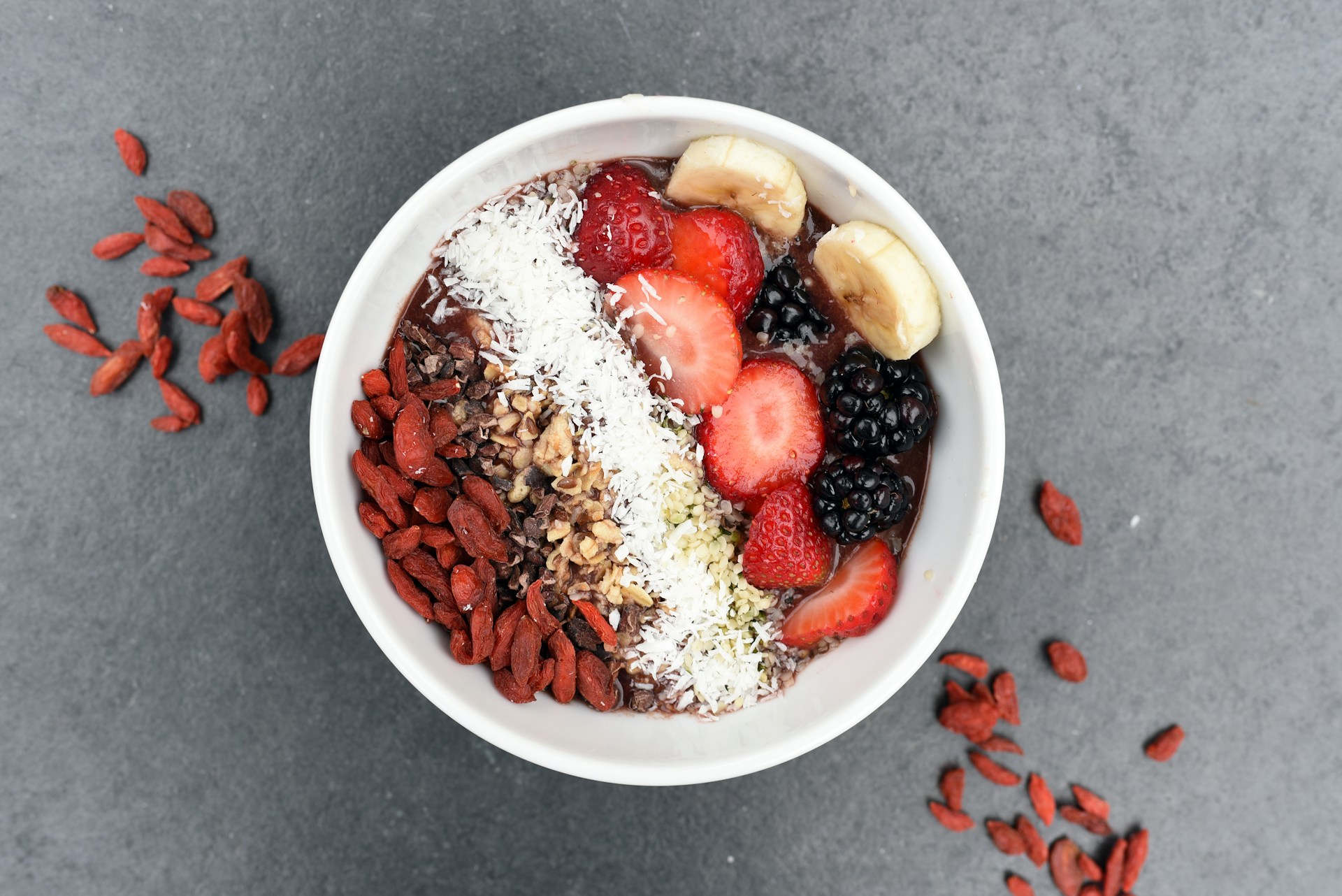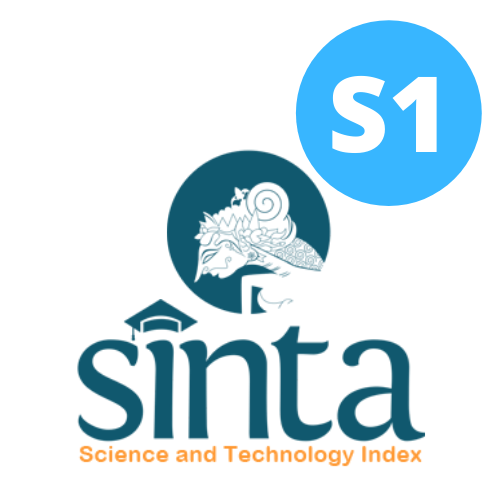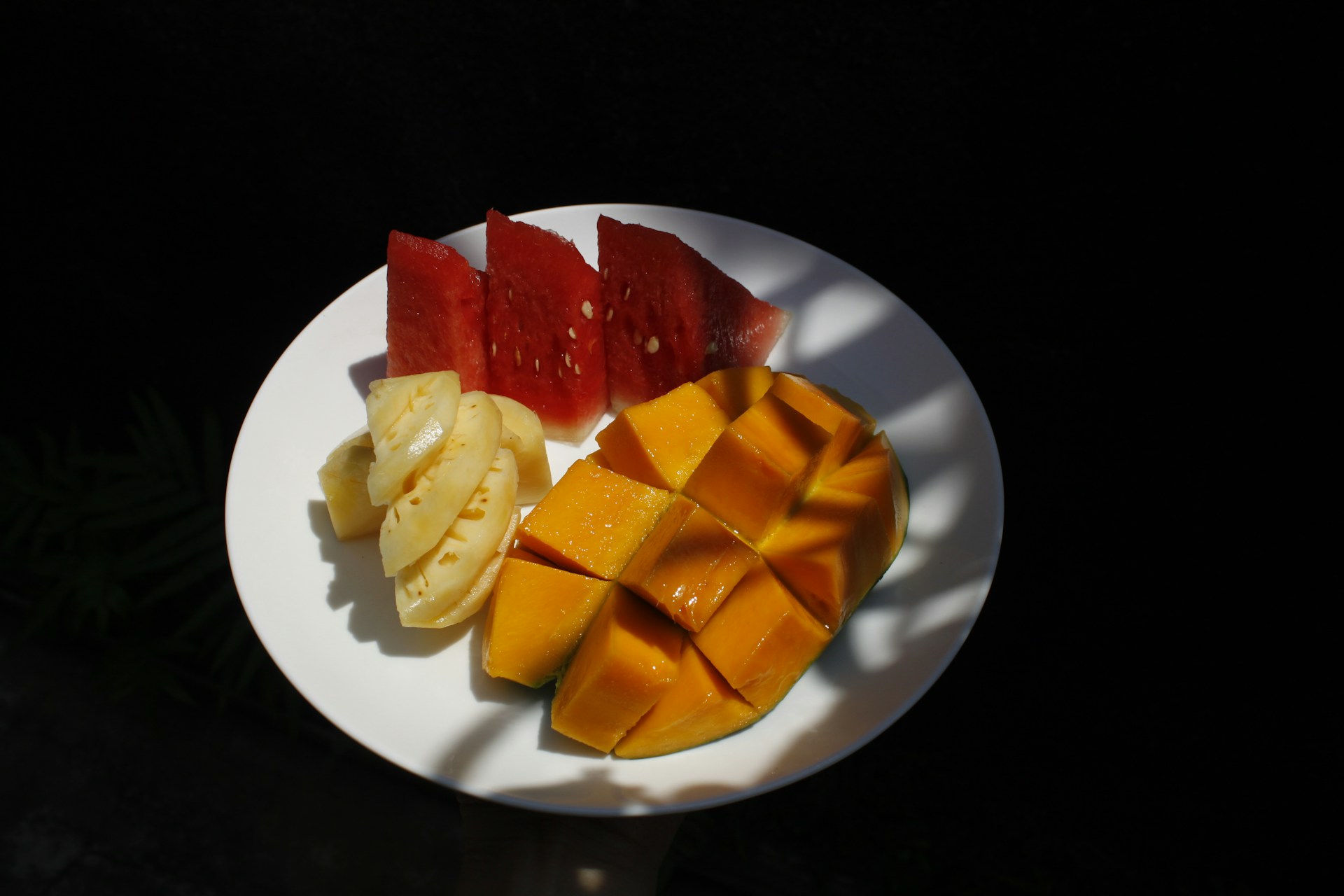Differences Nutritional Status, Dietary Patterns, Diarrhea History, and Nutritional Knowledge between Children with Autism and children without Autism in Jakarta
Perbedaan Status Gizi, Pola Makan, Riwayat Diare, dan Pengetahuan Gizi Seimbang pada Anak Autisme dan Non-Autisme di Jakarta

Downloads
Background: Autism Spectrum Disorder (ASD) is characterized by difficulties in social interaction and communication. Children with ASD are at risk of being overweight due to selective eating patterns and parents' lack of nutritional knowledge, and they often experience diarrhea due to enzyme deficiencies.
Objectives: This study aims to determine the differences in nutritional status, dietary patterns, and diarrhea history between children with ASD and children without ASD, as well as the differences in the nutritional knowledge of parents or caregivers of children with ASD and children without ASD.
Methods: The research uses a case-control design with 102 samples (51 children with ASD and 51 children without ASD) obtained through cluster random sampling. Nutritional status data were collected from anthropometric measurements, dietary patterns through the SQ-FFQ, and parents' nutritional knowledge and children's diarrhea history through questionnaires. Data analysis utilized Independent Sample T-test or Mann Whitney tests.
Results: Results showed significant differences in nutritional status (height-for-age, p-value=0.006), frequency of staple food consumption (p-value=0.018), animal protein (p-value=0.014), dairy products (p-value=0.001), amount of staple food consumption (p-value=0.016), dairy products (p-value=0.003), fat intake (p-value=0.037), fiber intake (p-value=0.033), frequency of diarrhea (p-value=0.042), and duration of diarrhea (p-value=0.042). However, there were no significant differences in BMI-for-age (p-value=0.410) and caregiver’s nutritional knowledge scores (p-value=0.855).
Conclusions: It can be concluded that children with ASD and without ASD have differences in nutritional status, dietary patterns, and diarrhea history.
Katilik, A. N. & Djie, J. A. Penerapan Pendekatan Orff-Schulwerk untuk Meningkatkan Hasil Belajar Siswa dengan Autism Spectrum Disorder (ASD) dalam Pembelajaran Instrumen Ritmis Sederhana. Seni Musik 12, 91–109 (2022). doi:dx.doi.org/xx.xxxxxx/jsm.v1i1.xxx.
Maenner, M. J. et al. Prevalence and Characteristics of Autism Spectrum Disorder Among Children Aged 8 Years — Autism and Developmental Disabilities Monitoring Network, 11 Sites, United States, 2020. MMWR. Surveill. Summ. 72, 1–14 (2023). doi:https://doi.org/10.58230/27454312.71. 1546-0738.
Shalehah, N., Suminar, T. & Diana, D. Strategi Guru dalam Meningkatkan Keterampilan Sosial Anak Autistic Spectrum Disorder (ASD). J. Obs. J. Pendidik. Anak Usia Dini 7, 5757–5766 (2023). doi:10.31004/obsesi.v7i5.5287. 2549-8959.
Sabani, F. Perkembangan Anak - Anak Selama Masa Sekolah Dasar (6 - 7 Tahun). Didakta J. Kependidikan 8, 89–100 (2019). doi:https://doi.org/10.58230/27454312.71.
Rahmawati, T. & Marfuah, D. Gambaran Status Gizi pada Anak Sekolah Dasar. Profesi (Profesional Islam. Media Publ. Penelit. 14, 72 (2016). doi:10.26576/profesi.140. 2548-9933.
Andyca, F. Faktor-Faktor yang Berhubungan dengan Status Gizi pada Anak Autis di Tiga Rumah Autis (Bekasi, Tanjung Priuk, Depolk) dan Klinik Tumbuh Kembang Kredibel Depok. (Fakultas Kesehatan Masyarakat. Universitas Indonesia, 2012).
Plaza-Diaz, J. et al. Dietary Patterns, Eating Behavior, and Nutrient Intakes of Spanish Preschool Children with Autism Spectrum Disorders. Nutrients 13, 3551 (2021). doi:10.3390/nu13103551. 2072-6643.
Kementerian Kesehatan RI. Riset Kesehatan Dasar (Riskesdas). (2018).
Dasantos, P. T., Dimiatri, H. & Husnah, H. Hubungan Berat Badan Lahir dan Panjang Badan Lahir dengan Stunting pada Balita di Kabupaten Pidie. AVERROUS J. Kedokt. dan Kesehat. Malikussaleh 6, 29 (2020). doi:10.29103/averrous.v6i2.2649. 2502-8715.
USDA. Dietary Guidelines Advisory Committee Report. (2020).
Canals-Sans, J., Esteban-Figuerola, P., Morales-Hidalgo, P. & Arija, V. Do Children with Autism Spectrum Disorders Eat Differently and Less Adequately than Those with Subclinical ASD and Typical Development? EPINED Epidemiological Study. J. Autism Dev. Disord. 52, 361–375 (2022). doi:10.1007/s10803-021-04928-7. 1573-3432.
Pestia. Hubungan Antara Kebiasaan Makan, Morbiditas, dan Aktivitas Fisik dengan Status Gizi Anak Autis dan Non-Autis di Bogor. (Institut Pertanian Bogor, 2018).
Utami, M. M. H. Keterkaitan Antara Kebiasaan Sarapan, Jajan, serta Konsumsi Buah dan Sayur dengan Status Gizi Anak Autis dan Non-Autis di Bogor. (Institut Pertanian Bogor, 2018).
Kemenkes RI. Peraturan Menteri Kesehatan Republik Indonesia Nomor 41 Tahun 2014 Tentang Pedoman Gizi Seimbang. (2014).
Kuswanti, I. & Khairani Azzahra, S. Hubungan Pengetahuan Ibu Tentang Pemenuhan Gizi Seimbang dengan Perilaku Pencegahan Stunting pada Balita. J. Kebidanan Indones. 13, 15–22 (2022). doi:10.36419/jki.v13i1.560. 2579-7824.
Aisyah, Elvandari, M. & Kurniasari, R. Hubungan Asupan Zat Gizi Makro, Pengetahuan Dan Pola Asuh Ibu Dengan Status Gizi Anak Autis Di SLB Kota Bandung. 105–118 (2023) doi:https://doi.org/10.30597/jgmi.v12i2.29916. doi:https://doi.org/10.30597/jgmi.v12i2.29916.
Baculu, E. P. H. & Andri, M. Faktor Risiko Autis Untuk Mengurangi Generasi Autis Anak Indonesia. MPPKI (Media Publ. Promosi Kesehat. Indones. Indones. J. Heal. Promot. 2, 5–11 (2019). doi:10.31934/mppki.v2i1.522.
World Health Organization (WHO). Growth Reference 5-19 Years. (2007).
Khomsan, A. Teknik Pengukuran Pengetahuan Gizi. (PT Penerbit IPB Press, Bogor, 2021).
Napolitano, A. et al. Sex Differences in Autism Spectrum Disorder: Diagnostic, Neurobiological, and Behavioral Features. Front. Psychiatry 13, (2022). doi:10.3389/fpsyt.2022.889636. 1664-0640.
Rouphael, M., Sacre, Y., Bitar, T., Andres, C. R. & Hleihel, W. Body Composition and Anthropometric Measurements in Children and Adolescents with Autism Spectrum Disorder: A Case–Control Study in Lebanon. Nutrients 16, 847 (2024). doi:10.3390/nu16060847. 2072-6643.
Evans, E. W. et al. Dietary Patterns and Body Mass Index in Children With Autism and Typically Developing Children. Res. Autism Spectr. Disord. 6, 399–405 (2012). doi:10.1016/j.rasd.2011.06.014. 17509467.
Mendive Dubourdieu, P. & Guerendiain, M. Dietary Intake, Nutritional Status and Sensory Profile in Children with Autism Spectrum Disorder and Typical Development. Nutrients 14, (2022). doi:10.3390/nu14102155. 2072-6643 (Electronic).
Ghazali, N. H., Buhari, S. S. & Ilias, K. Weight Status, Dietary Intake, and Mealtime Behaviour Among Autism Spectrum Disorder Children in Klang Valley, Malaysia. Malaysian J. Med. Heal. Sci. 19, (2023). doi:10.47836/mjmhs.19.s9.9. 1675-8544.
Al-Kindi, N. M. et al. Dietary Intake and Food Preferences of Autistic Children Versus Children with Typical Development: A Comparative Cross-Sectional Study. EC Nutr. 6, 72–85 (2016).
Babinska, K. et al. Gastrointestinal Symptoms and Feeding Problems and Their Associations with Dietary Interventions, Food Supplement Use, and Behavioral Characteristics in a Sample of Children and Adolescents with Autism Spectrum Disorders. Int. J. Environ. Res. Public Health 17, 6372 (2020). doi:10.3390/ijerph17176372. 1660-4601.
Mundiastuti, L. et al. Kajian Kebiasaan Makan Lauk Hewani Siswa SD Cemandi. Daerah Pesisir Pantai, Kabupaten Sidoarjo. Communnity Dev. J. 4, 11721–11726 (2023). doi:https://doi.org/10.31004/cdj.v4i6.22722.
Rossalia, I., Puteri, P. & Arintasari, F. Efektivitas Penerapan Reponsive Feeding untuk Mengatasi Gangguan Pola Makan pada Anak dengan Autism Spectrum Disorder (ASD) untuk Menanggulangi Stunting pada Masa Pandemi Covid-19. Pros. Semin. Nas. Multidisiplin Ilmu 4, 33–40 (2022). 2657-2397.
Verawati, B., Yanto, N. & Afrinis, N. Hubungan Asupan Protein dan Kerawanan Pangan dengan Kejadian Stunting pada Balita di Masa Pendemi Covid 19. PREPOTIF J. Kesehat. Masy. 5, 415–423 (2021). doi:10.31004/prepotif.v5i1.1586. 2623-1581.
Esteban-Figuerola, P., Morales-Hidalgo, P., Arija-Val, V. & Canals-Sans, J. Are there anthropometric and body composition differences between children with autism spectrum disorder and children with typical development? Analysis by age and spectrum severity in a school population. Autism 25, 1307–1320 (2021). doi:10.1177/1362361320987724. 1362-3613.
van der Lubbe, A., Swaab, H., Vermeiren, R., van den Akker, E. & Ester, W. Novel Insights into Obesity in Preschool Children with Autism Spectrum Disorder. Child Psychiatry Hum. Dev. (2024) doi:10.1007/s10578-024-01679-1. doi:10.1007/s10578-024-01679-1. 0009-398X.
Kurnia, N. & Muniroh, L. Hubungan Perilaku Picky Eater dengan Tingkat Kecukupan Zat Gizi pada Anak Autism Spektrum Disorder (ASD). Media Gizi Indones. 13, 151 (2018). doi:10.20473/mgi.v13i2.151-158. 2540-8410.
Toscano, C. V. A., Ferreira, J. P., Gaspar, J. M. & Carvalho, H. M. Growth and weight status of Brazilian children with autism spectrum disorders: A mixed longitudinal study. J. Pediatr. (Rio. J). 95, 705–712 (2019). doi:10.1016/j.jped.2018.06.008. 00217557.
Zeybek, S. G. & Yurttagul, M. Nutrient status, diet quality and growth parameters of children with autism spectrum disorder in Northern Cyprus. Prog. Nutr. 22, (2020). doi:10.23751/pn.v22i3.8847. 11298723.
Raspini, B. et al. Dietary Patterns and Weight Status in Italian Preschoolers with Autism Spectrum Disorder and Typically Developing Children. Nutrients 13, 4039 (2021). doi:10.3390/nu13114039. 2072-6643.
Putri, M. P., Dary, D. & Mangalik, G. Asupan Protein, Zat Besi dan Status Gizi pada Remaja Putri. J. Nutr. Coll. 11, 6–17 (2022). doi:10.14710/jnc.v11i1.31645. 2622-884X.
Jory, J. Abnormal fatty acids in Canadian children with autism. Nutrition 32, 474–477 (2016). doi:10.1016/j.nut.2015.10.019. 08999007.
Praditasari, J. A. & Sumarmik, S. Asupan Lemak, Aktivitas Fisik Dan Kegemukan Pada Remaja Putri Di Smp Bina Insani Surabaya. Media Gizi Indones. 13, 117 (2018). doi:10.20473/mgi.v13i2.117-122. 1693-7228.
Jati, L. U. Perbedaan Asupan Lemak, Lingkar Pinggang Dan Persentase Lemak Tubuh Pada Wanita Dislipidemia Dan Non Dislipidemia. J. Kesehata Masy. 2, 292–299 (2014). doi:https://doi.org/10.14710/jkm.v2i5.6414.
Hardi, A. D., Indriasari, R. & Hidayanti, H. Hubungan Pola Konsumsi Pangan Sumber Serat dengan Kejadian Overweight pada Remaja di SMP Negeri 3 Makassar. J. Gizi Masy. Indones. J. Indones. Community Nutr. 8, (2019). doi:10.30597/jgmi.v8i2.8508. 2686-1909.
da Silva, R. V. & Gomes, D. L. Eating Behavior and Nutritional Profile of Children with Autism Spectrum Disorder in a Reference Center in the Amazon. Nutrients 16, 452 (2024). doi:10.3390/nu16030452. 2072-6643.
Setyowati, D., Prasetyo, B. & Husada, D. Differences in Growth of Children with Autism and Normal in Surabaya, Indonesia. Indian J. Public Heal. Res. Dev. 10, 899 (2019). doi:10.5958/0976-5506.2019.01692.9. 0976-0245.
Diolordi, L., del Balzo, V., Bernabei, P., Vitiello, V. & Donini, L. M. Eating habits and dietary patterns in children with autism. Eat. Weight Disord. - Stud. Anorexia, Bulim. Obes. 19, 295–301 (2014). doi:10.1007/s40519-014-0137-0. 1124-4909.
Chaidez, V., Hansen, R. L. & Hertz-Picciotto, I. Gastrointestinal Problems in Children with Autism, Developmental Delays or Typical Development. J. Autism Dev. Disord. 44, 1117–1127 (2014). doi:10.1007/s10803-013-1973-x. 0162-3257.
Bresnahan, M. et al. Association of Maternal Report of Infant and Toddler Gastrointestinal Symptoms With Autism. JAMA Psychiatry 72, 466 (2015). doi:10.1001/jamapsychiatry.2014.3034. 2168-622X.
Taliwongso, F. C., Manoppo, J. I. C. & Umboh, A. Hubungan Stunting dengan Angka Kejadian Diare pada Siswa Sekolah Dasar di Kecamatan Tikala Manado. e-CliniC 5, (2017). doi:10.35790/ecl.5.2.2017.18526.
Al-Beltagi, M., Saeed, N. K., Bediwy, A. S., Elbeltagi, R. & Alhawamdeh, R. Role of gastrointestinal health in managing children with autism spectrum disorder. World J. Clin. Pediatr. 12, 171–196 (2023). doi:10.5409/wjcp.v12.i4.171. 2219-2808.
Advani, S., Kochhar, G., Chachra, S. & Dhawan, P. Eating everything except food (PICA): A rare case report and review. J. Int. Soc. Prev. Community Dent. 4, 1 (2014). doi:10.4103/2231-0762.127851. 2231-0762.
Ristori, M. V. et al. Autism, Gastrointestinal Symptoms and Modulation of Gut Microbiota by Nutritional Interventions. Nutrients 11, 2812 (2019). doi:10.3390/nu11112812. 2072-6643.
Chasanah, M. F. Hubungan antara Pengetahuan Gizi Ibu serta Kebiasaan Konsumsi Gluten dan Kasein dengan Status Gizi Anak Autis dan Non-Autis di Bogor. (Institut Pertanian Bogor, 2018).
Shohaimi, D. A. et al. Knowledge of Special Nutrition for Children with Autism Spectrum Disorder Among Parents and Special Educators in Malaysia. J. Sains Kesihat. Malaysia 19, 127–135 (2021). doi:10.17576/jskm-2021-1901-14. 16758161.
Judiono, J. et al. Faktor Determinan Panjang Badan Bayi Lahir Pendek sebagai Faktor Risiko Stunting di Jawa Barat. Amerta Nutr. 7, 240–247 (2023). doi:10.20473/amnt.v7i2.2023.240-247. 2580-9776.
Sopiandi, R. Pengetahuan Gizi Ibu, Pola Makan, Asupan Zat Gizi dan Status Gizi Anak Dengan Autism Spectrum Disorder (ASD). Argipa 2, 45–53 (2017).
Copyright (c) 2025 Amerta Nutrition

This work is licensed under a Creative Commons Attribution-ShareAlike 4.0 International License.
AMERTA NUTR by Unair is licensed under a Creative Commons Attribution-ShareAlike 4.0 International License.
1. The journal allows the author to hold the copyright of the article without restrictions.
2. The journal allows the author(s) to retain publishing rights without restrictions
3. The legal formal aspect of journal publication accessibility refers to Creative Commons Attribution Share-Alike (CC BY-SA).
4. The Creative Commons Attribution Share-Alike (CC BY-SA) license allows re-distribution and re-use of a licensed work on the conditions that the creator is appropriately credited and that any derivative work is made available under "the same, similar or a compatible license”. Other than the conditions mentioned above, the editorial board is not responsible for copyright violation.












































